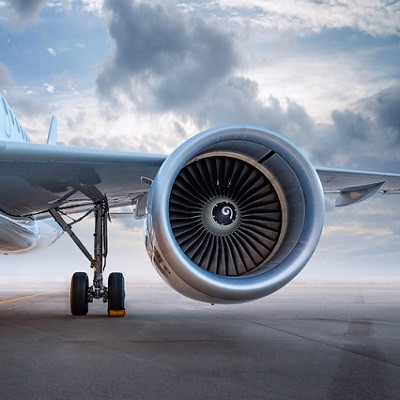
2021-05-20
Visited : 2086
Graphene Flagship – a European Commission-funded vehicle for graphene research and innovation – has announced its latest project will deliver next-generation aerospace filtration using heatable aero-graphene foams.
Challenges for Air Filter Maintenance
Next-generation aerospace filtration could be a significant boon to the aerospace industry, which has suffered dramatically due to the global outbreak of COVID-19 in 2020 and subsequent national and international lockdowns impeding business.
Airplanes require extensive filtration systems to keep fluids used to fly the aircraft pure, as well as for cleaning the air that passes through the aircraft and keeps its passengers alive.
Air filter maintenance currently represents a significant cause of aircraft downtime, as the aero-material filters in the aerospace industry today have to be replaced once or twice each year depending on the aircraft’s use.
These state-of-the-art HEPA filters are costly to manufacture and replace, and take valuable maintenance time for cleaning. It is, therefore, no surprise that innovators in the industry have been looking to self-cleaning air filters as a possible answer to the challenges of air filter maintenance.
Heatable Aero-Graphene Foams for Next-Generation Aerospace Filtration
The latest Graphene Flagship endeavor – named the AEROGrAFT Spearhead Project – will be delivered in partnership with Naturality Research and Development in Spain, as well as Lufthansa Technik, Phi-Stone, and Sixonia Tech in Germany.
The project will develop aero-graphene – a very low-density, graphene-based material – in a foam application to reduce the cleaning time of aero-material filters in the aerospace industry.
Prototype self-cleaning air filters will be designed using heatable aero-graphene foams. Graphene’s natural homogenous heat distribution properties led to researchers testing the material for air filter maintenance applications.
Graphene’s even thermal conductivity properties mean that the aero-graphene foam can ensure consistent cleaning across all surfaces of the self-cleaning air filters.
The Spearhead project is targeting longevity and reusability for its next-generation aerospace filtration using heatable aero-graphene foams. The project aims to make a foam that will be stable for 50 years within 18 months, and by the end of the three-year project, the foam should stay stable for 100 years.
This stability means that the final project will remain usable for multiple cleaning cycles. This will significantly reduce waste and ensure the manufacture of the heatable aero-graphene foams is as environmentally efficient as possible.
As well as reducing the need for more products, the heatable aero-graphene foams now being developed by the Spearhead project partners are being targeted towards fast turnaround time for maintenance crews.
By the one-and-a-half-year midway point for the Spearhead project, delivery partners aim to produce next-generation aerospace filtration that only takes 30 minutes to clean.
At the end of the project’s three-year period, this key performance indicator should come down to under ten minutes for filter cleaning. This could save aerospace companies significant outlay in terms of both aircraft downtime and maintenance costs.
Graphene Flagship: Beyond Heatable Aero-Graphene Foams
The AEROGrAFT Spearhead Project is just one of many innovative projects being led by Graphene Flagship to bring graphene technologies to bear on some of today’s major industrial problems.
Graphene Flagship is funded by the European Commission and partners, and has a budget of €1 billion. A total of 21 nations are represented in the organization, with over 170 academic and industrial partners included.
The organization’s stated aim is to bring graphene innovation out of the laboratory and into commercial and industrial applications today. The cutting-edge material was discovered by University of Manchester scientists in the early 2000s and has seen a surge in potential use cases put forward by companies and researchers since then.
Graphene Flagship’s many other projects for graphene applications include advanced lubrication technology for engine parts as well as more filtration applications. Graphene-based acids are being explored for the removal of heavy pollutants from contaminated water.
Next Steps for Heatable Aero-Graphene Foams and Self-Cleaning Air Filters
The AEROGrAFT Spearhead Project is currently underway. While no guarantees can be made, the project’s ambitious goals – aero-graphene foams with 100-year stability and self-cleaning air filters that take under ten minutes to maintain per cycle – will be hotly anticipated by the entire aerospace industry.
If the project results in a viable product, heatable aero-graphene foams will be commercialized and distributed as the next-generation aerospace filtration that the industry already needs.
Read the original article on AZoNano.